The long history of the G.A.R. Hall
| Published: 08-05-2019 6:12 PM |
In the early part of the 19th century, young scholars had to travel to other towns – some traveled across the state – to get an education more advanced than what could be obtained in the local one-room schoolhouses.
The 1830s are often described in the town’s history as a decade of intellectual awakening, most of which is attributed to the influence of minister Abiel Abbot. During those years, 13 boys from Peterborough attended Phillips Exeter Academy in Exeter. Others went to New Ipswich’s Appleton Academy. Girls from town attended academies in Hancock, Derry and New Ipswich, and Townsend and Groton, Mass. Most did not attend consecutive terms at school; they’d work on farms or in factories to earn enough money for a term or two, attend classes until the tuition money ran out, and then go back to work for a while.
“This method of education, after the effort necessary to achieve it, had the great advantage of making the student feel the real value of what he was obtaining,” George Abbot Morison wrote in the 1954 town history. “It was natural, then, that there should be a demand for an academy in Peterborough, particularly as it was becoming larger than other towns in the neighborhood that already were so provided.”
And so, in 1836, Rev. Abbot and formed a corporation to build an academy building. Fifty-nine people purchased 150 shares in the project, at $10 a share. Gen. James Wilson donated land on the east side of Grove Street.
The Peterborough Academy, built at a cost of $1,452.97, opened Aug. 21, 1837.
“The arrangement was that the corporation rented the building to the teacher for a nominal sum, and under certain regulations, he ran the Academy as a private venture taking the tuition of the pupils and making what he could out of it,” the history reports.
Nathan Ballard was the first teacher. The charges were as follows: English Branches, $3 per term; High English Branches, $3.50 per term; Greek and Latin Languages, $4; French and other modern languages, $1 per term.
Students who came from out of town boarded with local families for about $1.50 per week.
Article continues after...
Yesterday's Most Read Articles
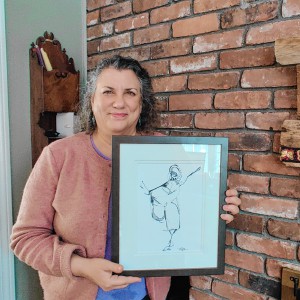 Deb Caplan builds a business out of her creative passion
Deb Caplan builds a business out of her creative passion
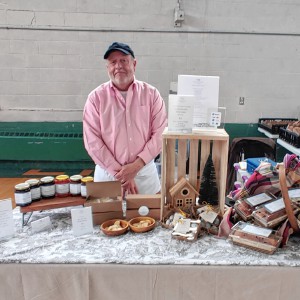 Peterborough Farmers’ Market opens for the season
Peterborough Farmers’ Market opens for the season
 Scott Bakula starring in Peterborough Players’ ‘Man of La Mancha’
Scott Bakula starring in Peterborough Players’ ‘Man of La Mancha’
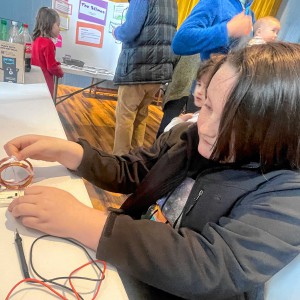 Young scientists show off their stuff at science fair in Francestown
Young scientists show off their stuff at science fair in Francestown
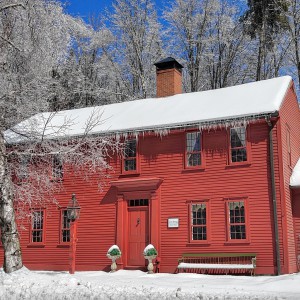 HOUSE AND HOME: The Old Parsonage in Antrim is a ‘happy house’
HOUSE AND HOME: The Old Parsonage in Antrim is a ‘happy house’
Riley B. Hatch, who taught at the school in 1859, spoke on his experiences at the 1904 Old Home Day celebration. He arrived in town the day before school started. “On the following morning I met my first school in Peterborough – a pleasant, bright, intelligent, well-behaved and interesting company of young people as it was ever my good fortune to have under my charge,” he said. “A large percentage were not only pupils, but students as well, doing faithful and honest work. Several had been teachers in the public schools and a considerable number were at work in Higher English, Mathematics, Latin, and one or two in Greek. It was, on the whole, one of the pleasantest and most satisfactory terms of school I ever taught.
An average of 75 to 80 students attended each term, many coming from surrounding towns. The academy was reportedly flourishing in 1867 with 75 students. Soon after, however, enrollments dropped. By the spring of 1870, only 40 were attending classes, and only 10 signed up for classes the following fall. With so few students, the school was closed.
“The Academy did much for Peterborough,” the history states. “Many of its most distinguished citizens graduated there. Without the Academy, it is hardly likely that Peterborough would have had a high school of its own before 1870, so we can consider the Academy as the keystone of the education of our citizens who did so much for the devel9pment of the town in the last half of the last century and the first two decades of this.”
The building was not empty for long. At the March 14, 1871 Town Meeting, voters agreed to establish a public high school – not out of a desire to see greater opportunities for young people, it should be noted, but because of a law passed by the state legislature requiring the town to spend more on education.
The stockholders of the Peterborough Academy agreed to let the town use their building as a high school.
After the town built its own school, the former academy was deeded to the town in 1899, and the use of the building was granted to first the Grand Army of the Republic post and then the American Legion.
A Look Back originally appeared in the Monadnock Ledger.

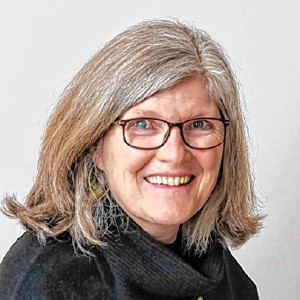 Margaret Nelson: View From the River – The gift of volunteers
Margaret Nelson: View From the River – The gift of volunteers
